|
Books Should Be Free Loyal Books Free Public Domain Audiobooks & eBook Downloads |
|
|
Books Should Be Free Loyal Books Free Public Domain Audiobooks & eBook Downloads |
|
Fantasy Books |
|---|
|
Book type:
Sort by:
View by:
|
By: Edgar Rice Burroughs (1875-1950) | |
|---|---|
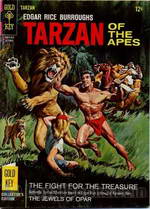 Tarzan of the Apes
Tarzan of the Apes
An aristocratic English family is marooned off the coast of West Africa. They find their way into the interior of the dense jungle that lines the coast and here, Lord Greystoke is killed by a predatory ape. Lady Greystoke survives with her infant boy, but in a few months, she too succumbs to the perils of jungle life. The baby is adopted by a maternal she-ape who nurses him along with her own child. This marks the dawn of a legend – Tarzan of the Apes. Edgar Rice Burroughs was an American novelist who turned to fiction writing after an unsuccessful stint as a pencil sharpener salesman... | |
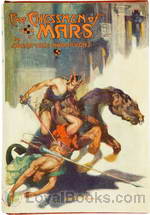 The Chessmen of Mars
The Chessmen of Mars
If you're a sci-fi fan, then you've probably heard of Edgar Rice Burroughs' famous Barsoom series of science fiction fantasy novels. Set in the “dying planet” Mars, the ten books in the series portray an Earthman, John Carter and his astral journey to the Red Planet, his marriage with a native princess and his descendants. The Chessmen of Mars is the fifth book in the Barsoom set, written in 1921 and published in serial form in Argosy magazine over the period of a year. Here, John Carter's daughter Tara meets Prince Gahan of the Gathol kingdom, but takes an instant dislike to the young and fashionable man, feeling that he is just a shallow youth... | |
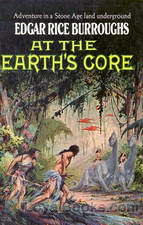 At the Earth's Core
At the Earth's Core
This is the first book in the Pellucidar series. Pellucidar is a fictional Hollow Earth milieu invented by Edgar Rice Burroughs for a series of action adventure stories. The stories initially involve the adventures of mining heir David Innes and his inventor friend Abner Perry after they use an “iron mole” to burrow 500 miles into the earth’s crust. (adapted from Wikipedia) | |
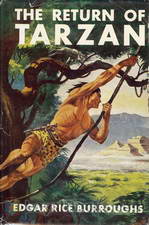 The Return of Tarzan
The Return of Tarzan
The novel picks up where Tarzan of the Apes left off. The ape man, feeling rootless in the wake of his noble sacrifice of his prospects of wedding Jane Porter, leaves America for Europe to visit his friend Paul d’Arnot. On the ship he becomes embroiled in the affairs of Countess Olga de Coude, her husband, Count Raoul de Coude, and two shady characters attempting to prey on them, Nikolas Rokoff and his henchman Alexis Paulvitch. | |
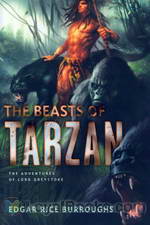 The Beasts of Tarzan
The Beasts of Tarzan
Originally featured as a five-part serial in All-Story Cavalier magazine in 1914 and later published in book form in 1916, The Beasts of Tarzan is the third book in the gripping Tarzan series. Shifting from London to the natural African scenery, the novel follows Tarzan as he finds himself in the wicked ploy of old enemies, which launches him into a mission to save his beloved wife and son, while also caring for his own welfare. Furthermore, he must go back to his previous life and reclaim his position as king of the jungle... | |
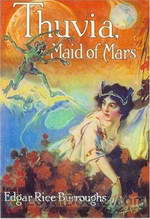 Thuvia, Maid of Mars
Thuvia, Maid of Mars
Published in 1920, Thuvia, Maid of Mars is the fourth book in the Barsoom series and concentrates on Carthoris, the son of infamous John Carter, and Thuvia, the princess of Ptarth, as they find themselves entangled in a complex web of love and strict traditions of Barsoom. A typical Burroughs piece, the installment contains all the required elements of an effective pulp fiction, including a hero, a damsel in distress, unforeseen complications, and a generous supply of action. Welcoming a new... | |
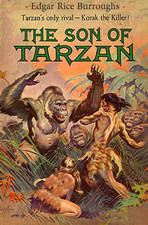 Son of Tarzan
Son of Tarzan
This is the fourth of Burrough’s Tarzan novels. Alexis Paulvitch, a henchman of Tarzan’s now-deceased enemy, Nikolas Rokoff, survived his encounter with Tarzan in the third novel and wants to even the score. (adapted from Wikipedia) | |
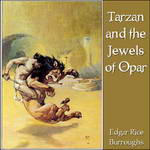 Tarzan and the Jewels of Opar
Tarzan and the Jewels of Opar
This is the fifth of Burrough’s Tarzan novels. Tarzan finds himself bereft of his fortune and resolves to return to the jewel-room of Opar, leaving Jane to face unexpected danger at home. | |
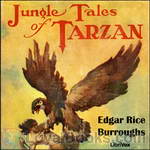 Jungle Tales of Tarzan
Jungle Tales of Tarzan
Jungle Tales of Tarzan is a collection of twelve loosely-connected short stories written by Edgar Rice Burroughs, comprising the sixth book in order of publication in his series about the title character Tarzan. Chronologically, the events recounted in it actually occur between chapters 12 and 13 of the first Tarzan novel, Tarzan of the Apes. | |
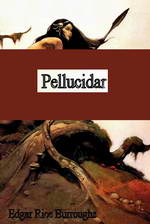 Pellucidar
Pellucidar
Pellucidar is a fictional “Hollow Earth” milieu invented by Edgar Rice Burroughs for a series of action adventure stories. The stories initially involve the adventures of mining heir David Innes and his inventor friend Abner Perry after they use an “iron mole” to burrow 500 miles into the earth’s crust. This is the second book in the series. | |
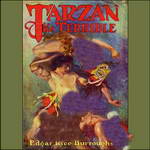 Tarzan the Terrible
Tarzan the Terrible
In the previous novel, during the early days of World War I, Tarzan discovered that his wife Jane was not killed in a fire set by German troops, but was in fact alive. In this novel two months have gone by and Tarzan is continuing to search for Jane. He has tracked her to a hidden valley called Pal-ul-don, which means "Land of Men." In Pal-ul-don Tarzan finds a real Jurassic Park filled with dinosaurs, notably the savage Triceratops-like Gryfs, which unlike their prehistoric counterparts are carnivorous... | |
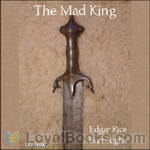 The Mad King
The Mad King
Shades of The Prisoner of Zenda! All our old friends are here—the young king, the usurping uncle and his evil henchman, the beautiful princess, the loyal retainer and the unwilling imposter. What more could you Hope for? This fast-paced story stays far away from Tarzan’s jungle or the inner world of Pellucidar. | |
 Tarzan the Untamed
Tarzan the Untamed
This book follows Tarzan and the Jewels of Opar chronologically. The action is set during World War I. While away from his plantation home in East Africa, invading German troops destroy it and kill his wife Jane and the Waziri warrior Wasimbu who is left crucified. Tarzan's search for vengeance is filled with much danger, many fierce fights and tons of action as he becomes active in the war on the British side. This is really just the start of the exciting adventures portrayed in this book. | |
By: Edgar Rice Burroughs (1875-1950) | |
|---|---|
 Tarzan and the Ant Men
Tarzan and the Ant Men
Lord Greystoke, Tarzan of the Apes, is embroiled in thrilling adventures among the tiny, warlike Minunians. | |
By: Edith King Hall | |
|---|---|
 Adventures in Toyland What the Marionette Told Molly
Adventures in Toyland What the Marionette Told Molly
| |
By: Edith Nesbit (1858-1924) | |
|---|---|
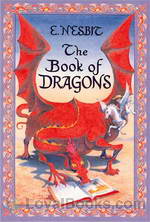 The Book of Dragons
The Book of Dragons
Eight enchanting tales about a variety of whimsical dragons, by a master of the craft, E Nesbit, are contained in this absolutely delightful volume, The Book of Dragons. While it's essentially meant for children, there are plenty of adults who will find it irresistible enough to peek into and a most charming way to spend a magical hour. Beautifully illustrated by the enormously talented Harold Robert Millar, the Scottish designer and illustrator famed for his unique and imaginative illustrations, The Book of Dragons is sure to delight both first time readers of the unique writer Edith Nesbit and those who have found pleasure in her other works... | |
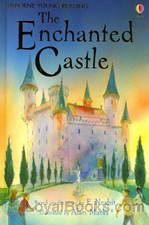 The Enchanted Castle
The Enchanted Castle
A children’s fantasy novel first published in 1907, The Enchanted Castle recounts the marvelous adventures encountered by a curious group of children searching to enliven their summer holiday. Written in episodes, the novel has a different adventure in store for its young heroes in each chapter, including vibrant statues, banquets with Greek gods, and reunited lovers. The novel begins when siblings Gerald, James and Kathleen are required to spend their summer holiday in a boarding school, due to unfortunate events at home and are consequently left under the supervision of a French schoolmistress... | |
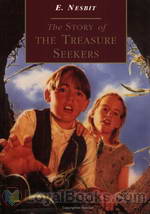 The Story of the Treasure Seekers
The Story of the Treasure Seekers
The six Bastable children are plunged into grief when their mother dies and their father's business partner cheats him of all his money. As a result, he loses not only his fortune but also his good name. However, the children decide to lend a hand. Determined to restore both, the children set out to find some way of making money. A variety of amusing and exciting events follow as they plunge into a series of scrapes in search of a legendary lost treasure. Published in 1899, The Story of the Treasure Seekers by E Nesbit was her first children's novel... | |
 The Magic City
The Magic City
Philip and Lucy discover that the city Philip has built using toys, books and household objects, has come alive. This is the account of their incredible adventures in those magical lands, where they meet characters from books and history, mythical beasts, and many other nice (and not so nice) people and creatures. As with all Edith Nesbit’s tales, The Magic City has generous helpings of humour, imagination and interesting ideas, as well as the over-arching story of how a boy and girl who have unwillingly become step-brother and sister eventually learn to like each other. A story that works on many levels and will be equally enjoyed by adults and children. | |
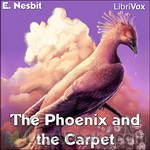 The Phoenix and the Carpet
The Phoenix and the Carpet
The Phoenix and the Carpet is a fantasy novel for children, written in 1904 by E. Nesbit. It is the second in a trilogy of novels that began with Five Children and It (1902), and follows the adventures of the same five protagonists – Cyril, Anthea, Robert, Jane and the Lamb. Their mother buys the children a new carpet to replace the one from the nursery that was destroyed in an unfortunate fire accident. Through a series of exciting events, the children find an egg in the carpet which cracks into a talking Phoenix. The Phoenix explains that the carpet is a magical one that will grant them three wishes per day. | |
 The Wonderful Garden or The Three C.'s
The Wonderful Garden or The Three C.'s
Do you believe in magic? Caroline, Charles and Charlotte do, and nothing that happens during their summer holiday at their great uncle's house does anything to diminish that belief. There the Three C.'s find a wonderful garden and some very old books, resulting in escapades which do not necessarily please the grown-ups.E. Nesbit, as usual, transports us back to the hazy summer days of a well-to-do Edwardian childhood, liberally spiced with magic, humour and lessons learned.Published exactly 100 years ago, this is one of her least-known children's books, out of print for many years, and with no text available online at the time of recording... | |
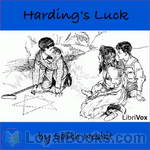 Harding's Luck
Harding's Luck
Harding's luck is sequel to E. Nesbit's "The House of Arden". It tells the story of Dickie Harding, a disabled boy, who one day accidentelly discovers an old magic, that allows him to travel into his own past. There he meets Elfrida and Edred Arden (as told in "The House of Arden") and together they seek for a long lost treasure. | |
By: Edmond Hamilton (1904-1977) | |
|---|---|
 The City at World's End
The City at World's End
A surprise nuclear war may cause the End of the World, but not the way anyone could have imagined. A classic science fiction tale from Galaxy Magazine. | |
By: Edward George Bulwer-Lytton (1803-1873) | |
|---|---|
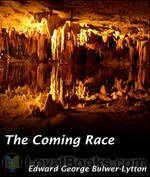 The Coming Race
The Coming Race
Edward George Earle Lytton Bulwer-Lytton, 1st Baron Lytton (1803-1873) was an English novelist, poet, playright, and politician. Lord Lytton was a florid, popular writer of his day, who coined such phrases as “the great unwashed”, “pursuit of the almighty dollar”, “the pen is mightier than the sword”, and the infamous incipit “It was a dark and stormy night.” Despite his popularity in his heyday, today his name is known as a byword for bad writing. San Jose State University holds... | |
By: Edward Ormondroyd | |
|---|---|
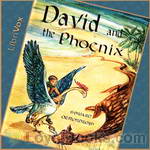 David and the Phoenix
David and the Phoenix
David knew that one should be prepared for anything when one climbs a mountain, but he never dreamed what he would find that June morning on the mountain ledge. There stood an enormous bird, with a head like an eagle, a neck like a swan, and a scarlet crest. The most astonishing thing was that the bird had an open book on the ground and was reading from it! This was David’s first sight of the fabulous Phoenix and the beginning of a pleasant and profitable partnership. The Phoenix found a great... | |
By: Edwin Abbott Abbott (1838-1926) | |
|---|---|
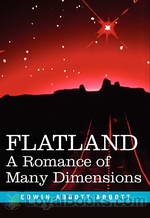 Flatland: A Romance of Many Dimensions
Flatland: A Romance of Many Dimensions
If you've never heard the term “Mathematical Fiction” before, Edwin Abbott Abbott's 1884 novella, Flatland can certainly enlighten you! Flatland: A Romance of Many Dimensions was published in 1884 and since then, it has been discovered and re-discovered by succeeding generations who have been delighted by its unique view of society and people. The plot opens with a description of the fictional Flatland. The narrator calls himself “Square” and asks readers to “Imagine a vast sheet of paper on which straight Lines, Squares, Triangles, Pentagons, Hexagons and other figures, instead of remaining fixed in their places, move freely about... | |
By: Edwin Lester Arnold (1857-1935) | |
|---|---|
 Wonderful Adventures of Phra the Phoenician
Wonderful Adventures of Phra the Phoenician
Phra, a Phoenician merchant and warrior, settles in the south of England as husband to Blodwen, a British princess. Slain during the Roman invasion, he reawakens several hundred years later to find that Blodwen has painstakingly tattooed the history of his family and village on his body. Slipping in and out of a state of suspended animation, Phra goes on to play his part in the departure of the Romans, the Norman conquest, and the Hundred Years' War. Meanwhile, Blodwen appears to Phra from time to time in ethereal form and in the guise of a succession of beautiful lovers... | |
By: Eleanor Gates (1875-1951) | |
|---|---|
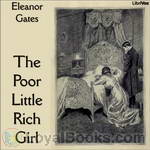 The Poor Little Rich Girl
The Poor Little Rich Girl
The Poor Little Rich Girl is a children’s fantasy about a little girl named Gwendolyn who is lonely and longs for a friend. But she is isolated by rich parents who ignore her and left to the care of servants who are indifferent. Her nanny’s carelessness with some medicine plunges Gwendolyn into a bewildering world in which metaphors literally come to life. | |
By: Eleanor Putnam (1856-1886) | |
|---|---|
 Prince Vance The Story of a Prince with a Court in His Box
Prince Vance The Story of a Prince with a Court in His Box
| |
By: Ellen Thorneycroft Fowler (1860-1929) | |
|---|---|
 Fuel of Fire
Fuel of Fire
"Then was there war in the house of Baxendale. Guy had made up his mind to wed the fair daughter of the forester; while Sir Stephen and Dame Alice his wife had made up their minds — with equal firmness — that no son of their noble name should mate with a daughter of the people". A rumor started that the girl was a witch and so she was burned. However before she was burned she cursed the family who condemned her: "First by the King, and then by the State, And thirdly by that which is thrice as great As these, and a thousandfold stronger and higher Shall Baxendale Hall be made fuel of fire"... | |
By: Elsie Spicer Eells | |
|---|---|
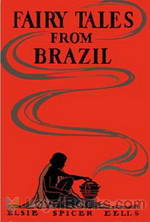 Fairy Tales from Brazil
Fairy Tales from Brazil
This book, subtitled "How and Why Tales from Brazilian Folk-Lore", is a collection of short stories, most of them etiologial myths from Brazilian Indian Folklore. | |
By: Ernest Bramah (1868-1942) | |
|---|---|
 Wallet of Kai Lung
Wallet of Kai Lung
The Wallet of Kai Lung is a collection of fantasy stories by Ernest Bramah, all but the last of which feature Kai Lung, an itinerant story-teller of ancient China. The collection's importance in the history of fantasy literature was recognized by the anthologization of two of its tales in the celebrated Ballantine Adult Fantasy Series. | |
By: Eugene Field (1850-1895) | |
|---|---|
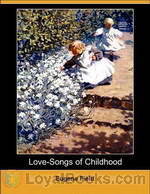 Love-Songs of Childhood
Love-Songs of Childhood
If you've heard and loved that delightful nursery rhyme/lullaby, Wynken Blynken and Nod you'd certainly enjoy browsing through its creator Eugene Field's Love Songs of Childhood. The volume contains some forty or more poems for children, which are ideal for read aloud sessions with young folks. Parents will certainly enjoy reading them too. Most of these poems have been set to music and are ideal for family sing-alongs too. Eugene Field was a gifted humorist as well as being a talented children's writer... | |
By: Eugène Sue (1804-1857) | |
|---|---|
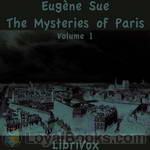 The Mysteries of Paris, Volume 1
The Mysteries of Paris, Volume 1
The Mysteries of Paris (French: Les Mystères de Paris) is a novel by Eugène Sue which was published serially in Journal des débats from June 19, 1842 until October 15, 1843. Les Mystères de Paris singlehandedly increased the circulation of Journal des débats. There has been lots of talk on the origins of the French novel of the 19th century: Stendhal, Balzac, Dumas, Gautier, Sand or Hugo. One often forgets Eugène Sue. Still, The Mysteries of Paris occupies a unique space in the birth of this... | |
By: Evelyn E. Smith (1927-2000) | |
|---|---|
 The Doorway
The Doorway
| |
By: Evelyn Underhill (1875-1941) | |
|---|---|
 Column of Dust
Column of Dust
Evelyn Underhill, the preeminent scholar of mysticism, wrote 3 novels in her youth, of which this is #3. Constance Tyrrel, a poor but literate woman works in a bookshop, suffers ennui, wonders if there is more to life than what she sees, invokes a ritual that she finds in a dusty old volume. Meanwhile, a disembodied spirit is consumed by a desire to know about the nature and content of the material world. It is drawn by Constance's call, where it appears as a column of dust. The two embark on adventures edifying to both and, incidentally to the reader. - Summary by Josh Mitteldorf | |
By: F. Anstey (1856-1934) | |
|---|---|
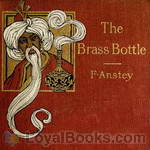 The Brass Bottle
The Brass Bottle
What happens when a not-so-lucky man happens upon a brass bottle and releases the djinni caught within? Misunderstanding, culture shock, hilarity, among other things. Will the well-intentioned djinni help his new master? Or will he make things even worse? | |
 Tinted Venus
Tinted Venus
When a young newly engaged man finds himself bound for an amusement garden with an old flame, not his fiancee, it is not surprising that he still feels some attraction for her. When they escape the heat of the dance floor to walk among the trees in the garden, it is not surprising that they should come upon a statue of a woman of uncommon beauty, with the smallest hands. When the young man attempts to demonstrate that his absent fiancee has hands even smaller than this immortalized stone woman, it is surprising when the engagement ring he is carrying fits easily on the stone finger, but does not easily come off... | |
 In Brief Authority
In Brief Authority
Satiric comedy from 1915 about a nouveau riche British family and their nanny who get whisked off to Maerchenland ('the land of Fairy Tales') one evening in a car drawn by storks. The matron of the family, a thorough snob, is crowned Queen of the country by mistake. She is quick to accept her new position and is determined to introduce British social niceties in her realm. And this really is the land of Fairy Tales, with gnomes, giants, a dragon, magic, a fairy godmother and more. Trouble quickly starts to brew as the royal couple and their son introduce things like capitalism and golf... | |
By: F. W. (Francis William) Bain (1863-1940) | |
|---|---|
 Bubbles of the Foam
Bubbles of the Foam
| |
 The Substance of a Dream
The Substance of a Dream
| |
 An Essence of the Dusk, 5th Edition
An Essence of the Dusk, 5th Edition
| |
By: Fanny Coe [editor] (1866-1956) | |
|---|---|
![The Book of Stories for the Storyteller by Fanny Coe [editor]](/image/layout2/The-Book-of-Stories-for-the-Storyteller.jpg) The Book of Stories for the Storyteller
The Book of Stories for the Storyteller
This is a delightful collection of 43 fairy tales (both old and new), folk lore, myths and real life stories by a variety of authors, brought together by writer Fanny E Coe. They are mostly short and are fun to listen to by children and adults and most teach valuable lessons about life. Some of the stories are: A Legend of the North Wind; How the Robin's Breast became Red; The Little Rabbits; St Christopher; The Necklace of Truth; A Night with Santa Claus; The Wolf-Mother of Saint Ailbe; Pocahontas and How Molly spent her Sixpence | |
By: Fitz James O'Brien (1828-1862) | |
|---|---|
 The Diamond Lens
The Diamond Lens
| |
By: Florence Dixie (1855-1905) | |
|---|---|
 Gloriana, or The Revolution of 1900
Gloriana, or The Revolution of 1900
At the age of twelve, Gloriana de Lara dreams of the day that women are no longer second-class citizens, be able to vote, can aspire to any career open to men. She makes a solemn vow in front of her mother, Speranza, that she will make her dream reality, or die trying. Some years later, she reappears in the guise of Hector D’Strange, and starts her revolution to free women from oppression. Written by gender equality and women’s suffrage activist Lady Florence Dixie in 1890, Gloriana has no shortage of self-confident, heroic and forceful women. | |
By: Frances Browne (1816-1879) | |
|---|---|
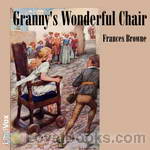 Granny's Wonderful Chair
Granny's Wonderful Chair
Her most famous work, Granny's Wonderful Chair, was published in 1856 and it is still in print to this day. It is a richly imaginative book of fairy stories and has been translated into many languages. This work, read as a child by Frances Hodgson Burnett, inspired the writings of Little Saint Elizabeth and Other Stories | |
By: Francis Godwin (1562-1633) | |
|---|---|
 The Man in the Moone
The Man in the Moone
A self-serving Spaniard discovers a means of traveling to the moon, describing his sensations in transit in terms remarkably consistent with modern astronauts' experiences. He finds on the moon a utopia, which he describes in detail, but being a fallen creature, he takes the first opportunity of coming home. ( | |
By: Francis Stevens (1883-1948) | |
|---|---|
 Serapion
Serapion
"An evil influence has been brought into touch with you," the medium warned Clayton Barbour. "A dead soul seeks to destroy your life that it may itself go on living." At that moment, Barbour began his grim struggle for possession of himself. | |
By: François Rabelais (1483-1553) | |
|---|---|
 Gargantua and Pantagruel
Gargantua and Pantagruel
The Life of Gargantua and of Pantagruel (in French, La vie de Gargantua et de Pantagruel) is a connected series of five novels written in the 16th century by François Rabelais. It is the story of two giants, a father (Gargantua) and his son (Pantagruel) and their adventures, written in an amusing, extravagant, satirical vein. There is much crudity and scatological humor as well as a large amount of violence. Long lists of vulgar insults fill several chapters. | |
By: Frank R. Stockton (1834-1902) | |
|---|---|
 The Bee-Man of Orn and Other Fanciful Tales
The Bee-Man of Orn and Other Fanciful Tales
A collection of nine enchanting short stories filled with curious beasts and unexpected endings. Included are The Bee-Man of Orn; The Griffin and the Minor Canon; Old Pipes and the Dryad; The Queen's Museum; Christmas Before Last: Or, The Fruit of the Fragile Palm; Prince Hassak's March; The Battle of the Third Cousins; The Banished King; and The Philopena | |
By: Friedrich de La Motte-Fouqué (1777-1843) | |
|---|---|
 Undine
Undine
Undine is a novel by Friedrich de la Motte Fouqué concerning Undine, a water spirit who marries a Knight named Huldebrand in order to gain a soul. It is an early German romance, which has been translated into English and other languages. The novel served as inspiration for two operas in the romantic style by Ernst Theodor Amadeus Hoffmann and Albert Lortzing, respectively, and two ballets: the nineteenth century Ondine and the twentieth century Undine. An edition of the book was illustrated by Arthur Rackham... | |
By: Fritz Leiber (1910-1992) | |
|---|---|
 Green Millennium
Green Millennium
From the classic science-fiction and fantasy author Fritz Leiber comes this intriguing tale of a green cat. From the author's introduction: "The world Phil Gish lived in was not a pretty one, and Phil didn't enjoy living in it. He was disillusioned, purposeless, hopeless, and haunted by the fear that a robot would take over his job. But then Phil was a timid person, not much given to adventure seeking. If he hadn't been so mild he might have found his kicks at All Amusements, the syndicated playground where anyone could find fun, providing he had the proper sadistic and otherwise aberrated elements in his personality... | |
By: G. K. Chesterton (1874-1936) | |
|---|---|
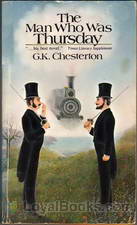 The Man Who was Thursday
The Man Who was Thursday
Two poets in a London park at sunset, debating on the attributes of poetry and whether it's really a metaphor for anarchy. A group that meets in secret, planning to overthrow the world order. Disguises and deceptions, ideals and ideology. A medley of themes and genres makes this a great read for anyone who's a fan of Chesterton and his iconic Father Brown. The Man Who Was Thursday includes Chesterton's favorite theme of Christianity with touches of delightful humor to enliven the twists and turns that abound throughout the book... | |
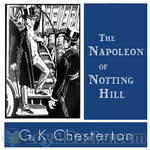 The Napoleon of Notting Hill
The Napoleon of Notting Hill
While the novel is humorous (one instance has the King sitting on top of an omnibus and speaking to it as to a horse: “Forward, my beauty, my Arab,” he said, patting the omnibus encouragingly, “fleetest of all thy bounding tribe”), it is also an adventure story: Chesterton is not afraid to let blood be drawn in his battles, fought with sword and halberd in the London streets, and Wayne thinks up a few ingenious strategies; and, finally, the novel is philosophical, considering the value of one man’s actions and the virtue of respect for one’s enemies. | |
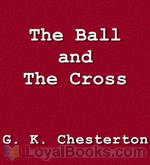 The Ball and the Cross
The Ball and the Cross
The Ball and the Cross is G. K. Chesterton's third novel. In the introduction Martin Gardner notes that it is a "mixture of fantasy, farce and theology." Gardner continues: "Evan MacIan is a tall, dark-haired, blue-eyed Scottish Highlander and a devout Roman Catholic.... James Turnbull is a short, red-haired, gray-eyed Scottish Lowlander and a devout but naive atheist.... The two meet when MacIan smashes the window of the street office where Turnbull publishes an atheist journal. This act of rage occurs when MacIan sees posted on the shop's window a sheet that blasphemes the Virgin Mary, presumably implying she was an adulteress who gave birth to an illegitimate Jesus... | |
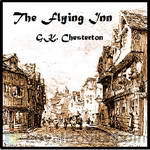 The Flying Inn
The Flying Inn
The Flying Inn is a novel first published in 1914 by G.K. Chesterton. It is set in a future England where a bizarre form of "Progressive" Islam has triumphed and largely dominates the political and social life of the country. Because of this, alcohol sales are effectively prohibited. The plot centers around the adventures of Humphrey Pump and Captain Patrick Dalroy, who roam the country in their cart with a barrel of rum in an attempt to evade Prohibition, exploiting loopholes in the law to temporarily prevent the police taking action against them. | |
By: George Chetwynd Griffith (1857-1906) | |
|---|---|
 The Romance of Golden Star ...
The Romance of Golden Star ...
| |
By: George E. Farrow (1866?-1920?) | |
|---|---|
 The Mysterious Shin Shira
The Mysterious Shin Shira
| |
 The Wallypug in London
The Wallypug in London
| |
 Dick, Marjorie and Fidge A Search for the Wonderful Dodo
Dick, Marjorie and Fidge A Search for the Wonderful Dodo
| |